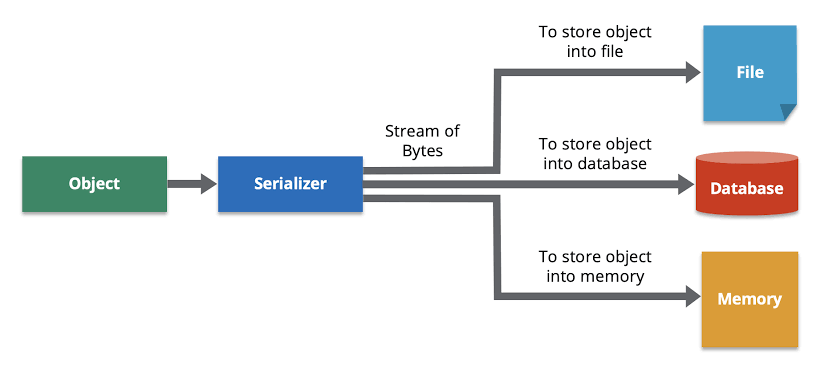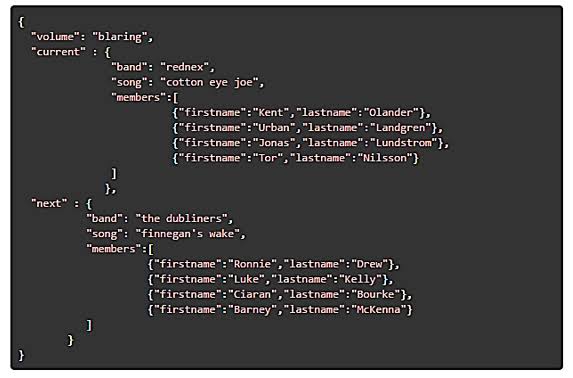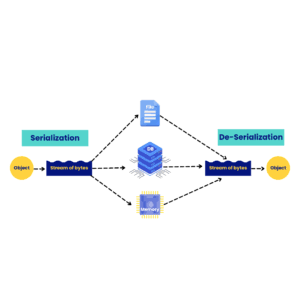In the ever-expanding realm of modern software development, the seamless exchange of data between applications stands as a cornerstone for the interoperability and efficiency of diverse systems. This critical process finds its essence in data serialization – the transformative act of converting intricate data structures into formats suitable for transmission or storage. In this blog, we will look into the three preeminent data serialization formats: Avro, Protocol Buffers, and JSON
Why Does Data Serialization Matter?

Data serialization plays a pivotal role in facilitating communication between distributed systems and storing data in a structured manner. When applications need to communicate over a network or persist data, they often encounter challenges related to data representation. Serialization addresses these challenges by providing a standardized way to encode data, making it easier for diverse systems to understand and interpret information.
The Trio: Avro, Protocol Buffers, and JSON
Among the myriad of serialization formats, Avro, Protocol Buffers (protobuf), and JSON have emerged as widely adopted choices. Each format comes with its unique characteristics and use cases, making it essential for developers to choose the right tool for the job.
Criteria for Selection
The selection of a serialization format is not arbitrary; it depends on the specific requirements of the use case. Factors such as human readability, schema enforcement, and performance considerations influence the choice of serialization format. Before we explore each format in detail, let us understand the fundamental concept of data serialization.
What is Data Serialization?
Data serialization involves converting complex data structures, such as objects or records, into a format that can be easily transmitted or stored. This format is often a string of bytes that can later be deserialized, reconstructing the original data structure. Serialization is particularly crucial in scenarios where data needs to traverse network boundaries or be persisted in a storage system.
The Need for Data Serialization in Distributed Systems
In distributed systems, where components communicate over a network, standardizing the data format is essential. Different programming languages may represent data structures differently, making it challenging to transmit information seamlessly. Serialization bridges this gap by providing a common language for data interchange.
JSON – The Human-Readable Format

JSON Overview
JSON (JavaScript Object Notation) has become ubiquitous in web development due to its simplicity and human-readable format. It is a text-based serialization format that represents data as key-value pairs and arrays. JSON’s readability makes it an excellent choice for configuration files, web APIs, and other scenarios where human consumption is a consideration.
JSON Syntax and Examples
Let us explore the syntax of JSON with a simple example:
json
{
“name”: “John Doe”,
“age”: 30,
“city”: “New York”
}
In this example, we have a JSON object representing user information with name, age, and city attributes.
JSON Serialization and Deserialization in Python
Python, a widely used programming language, has built-in support for JSON serialization and deserialization through the json module:
python
# JSON Serialization Example in Python
import json
data = {“name”: “John Doe”, “age”: 30, “city”: “New York”}
json_data = json.dumps(data)
print(“JSON Data:”, json_data)
# JSON Deserialization Example in Python
decoded_data = json.loads(json_data)
print(“Decoded Data:”, decoded_data)
In this Python code, we serialize a Python dictionary (data) into a JSON-formatted string and then deserialize it back into a Python object (decoded_data).
Avro – Schema-Based Serialization

Avro distinguishes itself by being a schema-based serialization framework. Unlike JSON, which is schema-less, Avro requires a predefined schema to serialize and deserialize data. This approach offers advantages in terms of data validation and compatibility.
An Avro schema defines the structure of the serialized data. Here’s an example of an Avro schema for a user:
json
{
“type”: “record”,
“name”: “User”,
“fields”: [
{“name”: “name”, “type”: “string”},
{“name”: “age”, “type”: “int”},
{“name”: “city”, “type”: “string”}
]
}
In this schema, we define a record named “User” with three fields: name (string), age (int), and city (string).
Avro Serialization and Deserialization in Python
Avro serialization and deserialization in Python involve using the avro library. The following code demonstrates the process:
python
# Avro Serialization and Deserialization Example in Python
from avro import schema, datafile, io
# Avro Schema Definition
avro_schema = schema.Parse(‘{“type”: “record”, “name”: “User”, “fields”: [{“name”: “name”, “type”: “string”}, {“name”: “age”, “type”: “int”}, {“name”: “city”, “type”: “string”}]}’)
# Avro Data Serialization
writer = datafile.DataFileWriter(open(“user_data.avro”, “wb”), io.DatumWriter(), avro_schema)
writer.append({“name”: “John Doe”, “age”: 30, “city”: “New York”})
writer.close()
# Avro Data Deserialization
reader = datafile.DataFileReader(open(“user_data.avro”, “rb”), io.DatumReader())
for user in reader:
print(“Deserialized User:”, user)
reader.close()
In this Python code, we define an Avro schema, serialize a user object, write it to a file, and then deserialize it back. Avro’s schema-based approach ensures data integrity during the serialization and deserialization processes.
Protocol Buffers – Efficient Binary Serialization

Protocol Buffers, commonly known as protobuf, is a binary serialization format developed by Google. It focuses on efficiency and is designed to be smaller and faster than text-based formats like JSON. The key to protobuf’s efficiency lies in its binary representation and the use of a schema definition language.
Protocol Buffers Schema Language
In protobuf, data structures are defined using a schema language. Here’s an example of a protobuf schema for a user:
proto
// Protocol Buffers Message Definition
syntax = “proto3”;
message User {
string name = 1;
int32 age = 2;
string city = 3;
}
This schema defines a User message with string fields for name and city and an integer field for age.
Protocol Buffers Serialization and Deserialization in Python
Protobuf serialization and deserialization in Python are accomplished using the generated Python classes based on the schema. Here’s an example:
python
# Protocol Buffers Serialization and Deserialization Example in Python
import user_pb2
# Create a User message
user = user_pb2.User()
user.name = “John Doe”
user.age = 30
user.city = “New York”
# Protocol Buffers Serialization
serialized_data = user.SerializeToString()
print(“Serialized Data:”, serialized_data)
# Protocol Buffers Deserialization
new_user = user_pb2.User()
new_user.ParseFromString(serialized_data)
print(“Deserialized User:”, new_user)
In this example, we use the protobuf schema to define a User message, create an instance of the message in Python, serialize it into a binary format, and then deserialize it back into a new Python object. The binary representation is more compact and efficient compared to text-based formats.
Conclusion
In conclusion, data serialization is a crucial aspect of modern software development, enabling seamless communication and data storage. Avro, Protocol Buffers, and JSON are three prominent serialization formats, each with its strengths and best-fit use cases. As developers, understanding the nuances of these formats is essential for making informed decisions based on the requirements of the application at hand.
In the dynamic landscape of software development, where scalability, performance, and compatibility are paramount, the choice of a serialization format can significantly impact the success of a project. By considering factors such as human readability, schema enforcement, and performance requirements, developers can navigate the complexities of data serialization and choose the right tool for the job. Whether it’s the simplicity of JSON, the schema-based approach of Avro, or the efficiency of Protocol Buffers, each format has its place in the developer’s toolkit, contributing to the robustness and flexibility of modern software systems.






Add comment